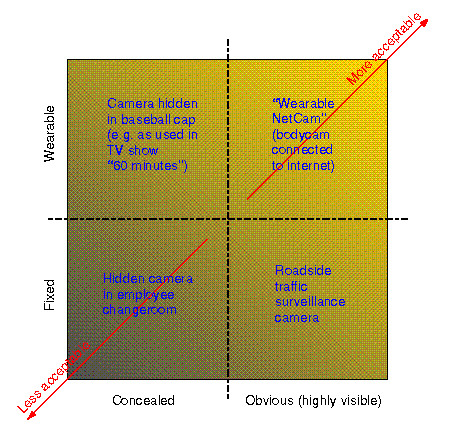
I consider the hidden cameras to be less acceptable than those that are out in the open. However, I find the camera in the baseball cap that TV shows use to be less invasive than the cameras hidden within the arthitecture; at least the cameras are attached to a person, and you know your not in private when somebody else is present. You'd be less likely to pick your nose when someone else is present. Furthermore, these cameras sometimes have an equalizing effect -- they expose injustice in our society, and, are usually pointed at dishonest shopkeepers, dishonest automechanics, dishonest used car salespeople, etc. They tend to balance the surveillance cameras that are found in shops, automotive repair establishments and on used car lots.
In fact, the wearable hidden cameras often turn the tables, exposing corruption in government, police, and business, and therefore balance the oppression created by the Big Brother cameras. I'd therefore be tempted to place them roughly at the same level of acceptability as fixed non-hidden camearas, as in the figure below:

Another important axis is missing from this plot, namely the obviousness of the video signal itself. Many users of surveillance systems conceal both the cameras (acquisition) and the signal itself (disemenation). Acquisitional overtness is a measure of how easy it is to spot the camera. Disemenational overtness is a measure of how easy it is to spot the signal. Take a look at some typical cameras on the overtness plane.
 in our society.
in our society.